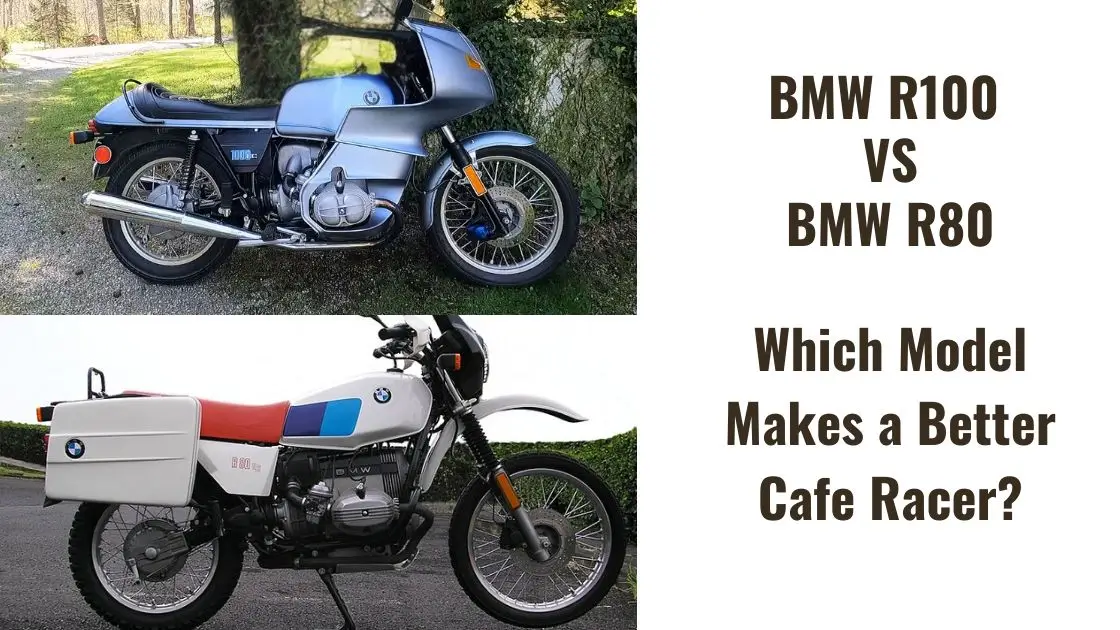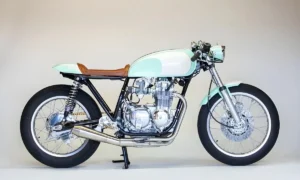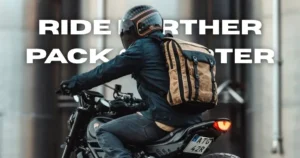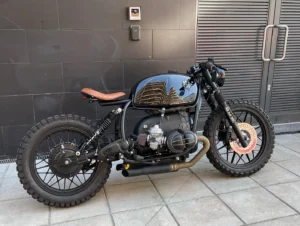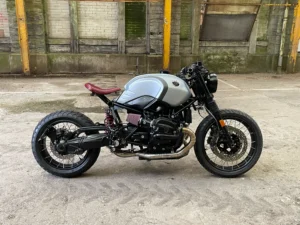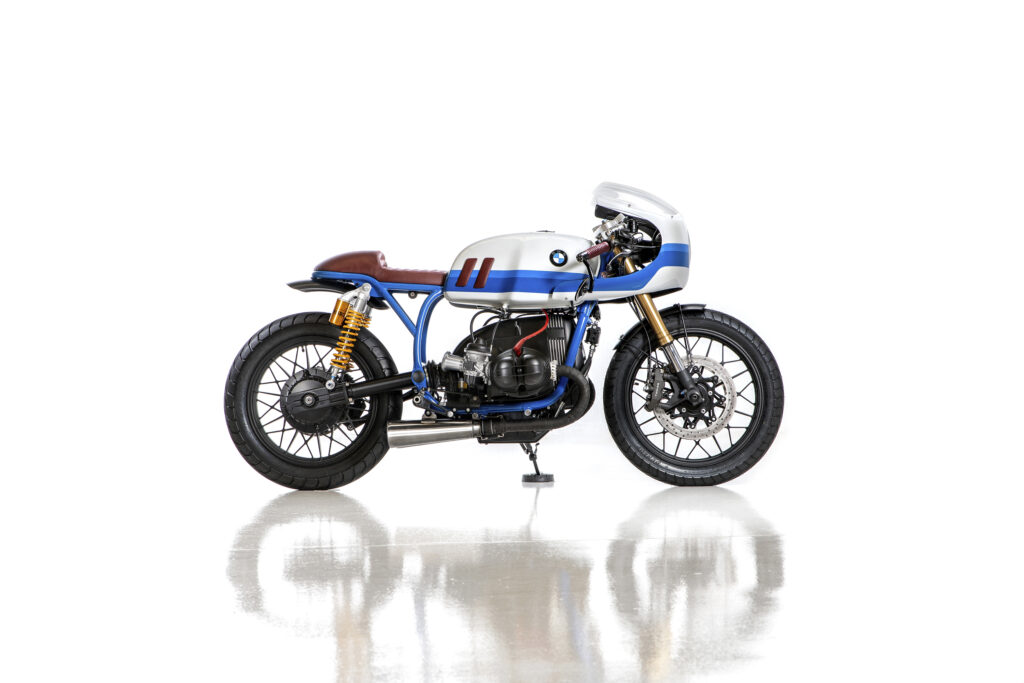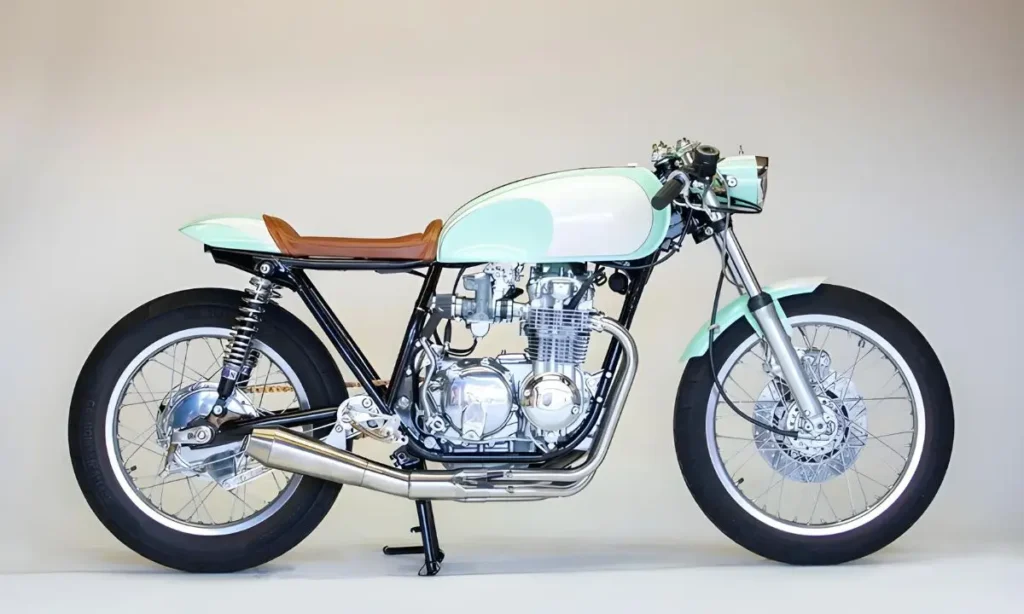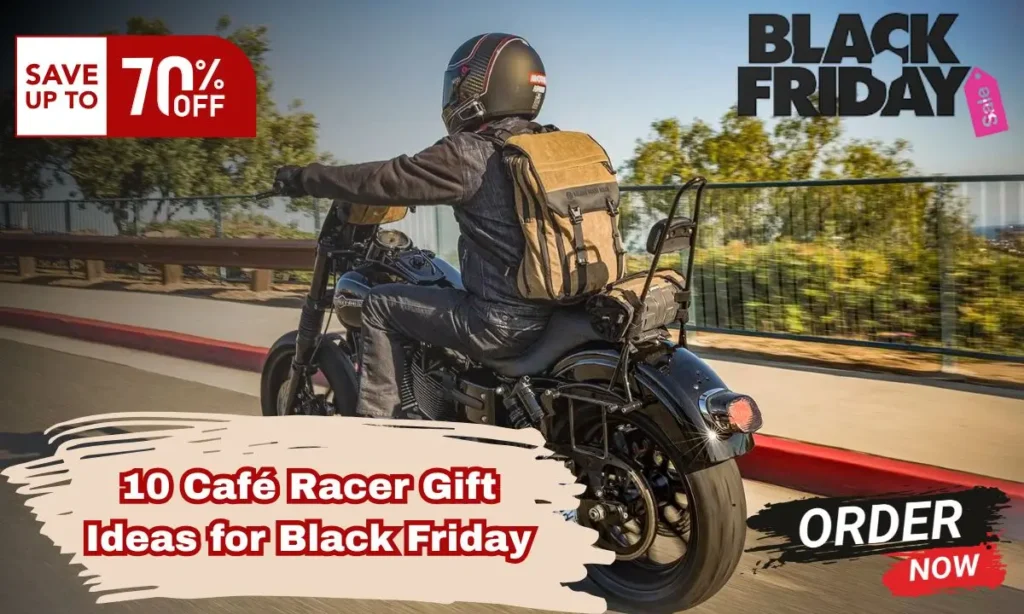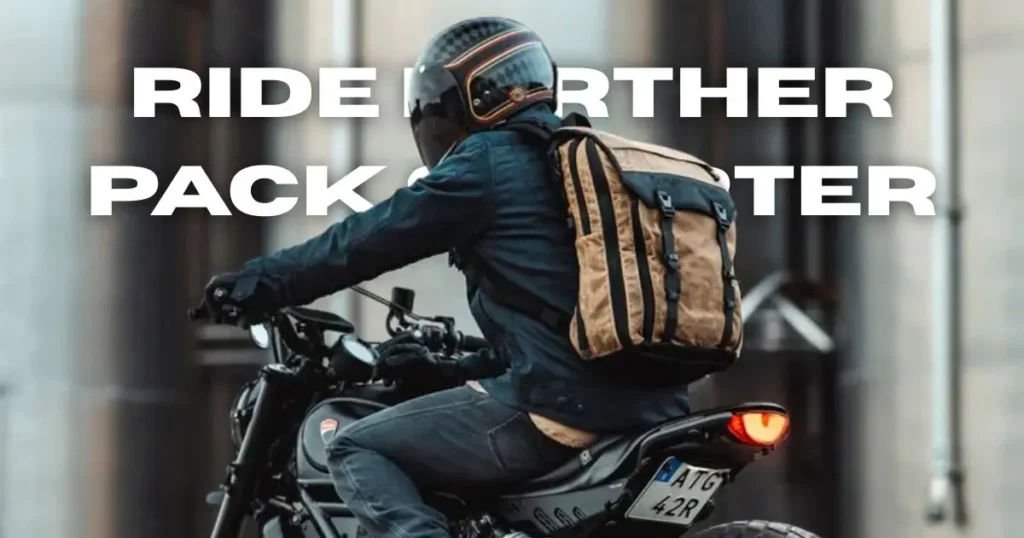Table of Contents
ToggleWhen you want to build the perfect café racer, two motorcycles from BMW often stand out: the BMW R100 and the BMW R80. These bikes have a long history and are famous for their strong boxer engines and tough design. But in the BMW R100 vs R80 debate, which one is better for a café racer?
In this article, we will look at the key differences between the BMW R100 and R80. We will talk about performance, how easy they are to customize, how they handle, and how much it costs to turn them into cafe racers. Whether you are an experienced motorcycle builder or just starting, I will help you decide which bike is right for you, your budget, and your style.
A cafe racer is a type of motorcycle that focuses on speed and style. It was very popular in the UK after World War II. These bikes are simple, light, and fast. They look great at cafes, which is how they got their name. The air-cooled BMW boxer engine is special. It has a flat-twin design, a strong build, and a reliable shaft drive. This makes it popular with custom builders.
But the big question is: R100 or R80? Let’s break it down. By the end of this article, you will know which model is best for your cafe racer dream.
Overview of BMW R100 and R80
Before we look at how to turn the BMW R100 or BMW R80 into a café racer, it’s important to understand what each bike offers. Both motorcycles are part of BMW’s famous airhead series. These bikes are known for their strong and reliable boxer engines and were built from the 1970s to the 1990s. The R100 and R80 look alike, but their differences can affect your choice when building a café racer.
BMW R100
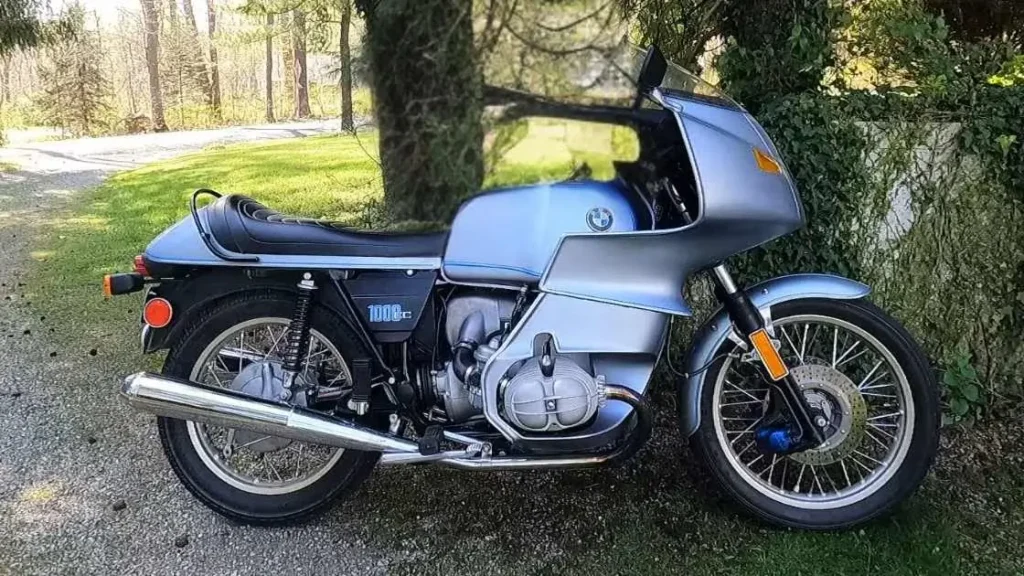
The BMW R100, introduced in 1976, has a larger 1000cc engine. This gives it more power and torque than the R80. The R100 is known for its versatility. It can handle long-distance touring and fast, spirited rides. For those building a powerful café racer, the R100 offers extra horsepower. This makes it a popular choice for riders who want more speed and strength from their machine.
BMW R80
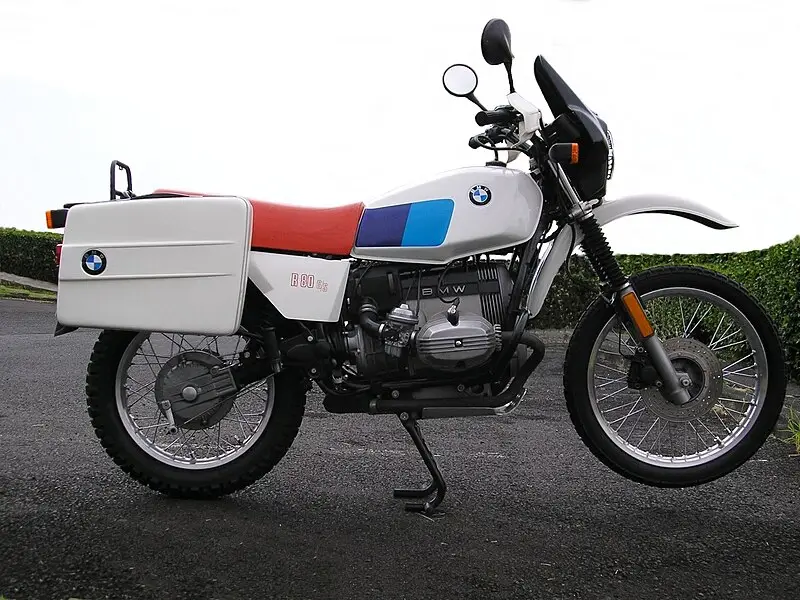
The BMW R80, introduced in 1977, has a smaller 800cc engine. It is lighter and often seen as more agile than the R100. While it doesn’t have the same raw power, the R80 makes up for it with smooth handling. This balance can be perfect for riders who want precision over speed when building a café racer.
Comparison Table: BMW R100 vs BMW R80
Here’s a quick comparison of key specifications to give you a better idea of how these two motorcycles stack up against each other:
| Feature | BMW R100 | BMW R80 |
| Engine Size | 1000cc | 797cc (800cc) |
| Horsepower | 60-70 HP | 50-55 HP |
| Torque | 72-76 Nm | 58 Nm |
| Top Speed | 120-130 mph (depending on model) | 105-110 mph |
| Weight | ~219 kg (483 lbs) | ~209 kg (461 lbs) |
| Fuel Economy | ~42 mpg | ~48 mpg |
| Handling | Stable, slightly heavy, great for long rides | Light, nimble, better suited for tighter turns |
| Customization Potential | High – more parts available, powerful base | High – easier to work with, lighter frame |
| Transmission | 5-speed | 5-speed |
| Price Range (as of today) | Higher (due to engine size and demand) | Slightly lower (more affordable base) |
| Ideal For | Riders seeking more power and speed | Riders seeking a balanced, agile ride |
Power vs. Precision
The BMW R100 stands out with its powerful engine and higher top speed. It’s the best choice for riders who want performance. Its bigger engine and stronger torque make it great for fast, straight-line riding. Café racer builders who want to push their bikes to the limit will love the R100.
The BMW R80, on the other hand, offers a lighter and smoother ride. It’s more fuel-efficient and easier to handle. This makes it better for tight spaces or city streets. Riders who prefer control and balance over raw power will find the R80 a great option.
What to Consider for a Café Racer Build?
Choosing between the R100 and R80 depends on what you want in a café racer. If you’re after a fast, powerful bike for highways or open roads, the R100’s extra power is a good option. But if you prefer a light, agile café racer for city streets and winding back roads, the R80 is a great choice.
BMW R100 vs R80: Performance Comparison
When it comes to performance, both the BMW R100 and R80 have unique features. Each bike appeals to different types of riders. Performance is key when building a café racer. This style of motorcycle is designed to be fast, responsive, and agile. Let’s explore how these two bikes perform, especially when customized as café racers.
Power and Acceleration: BMW R100

The BMW R100 is best known for its powerful engine. Its 1000cc flat-twin boxer engine produces about 60-70 horsepower and 72-76 Nm of torque. This gives it much more power than the R80. When you twist the throttle, you feel an instant burst of speed, making the R100 more aggressive on the road. If you enjoy straight-line speed and fast acceleration, the R100 is the better choice.
Many café racer builds of the R100 focus on increasing this power. By changing the exhaust system, tuning the carburetors, or upgrading the ignition, builders can make the engine even stronger. If you like pushing your bike to the limit, the R100 gives you the performance you need in a café racer.
Smooth Handling: BMW R80
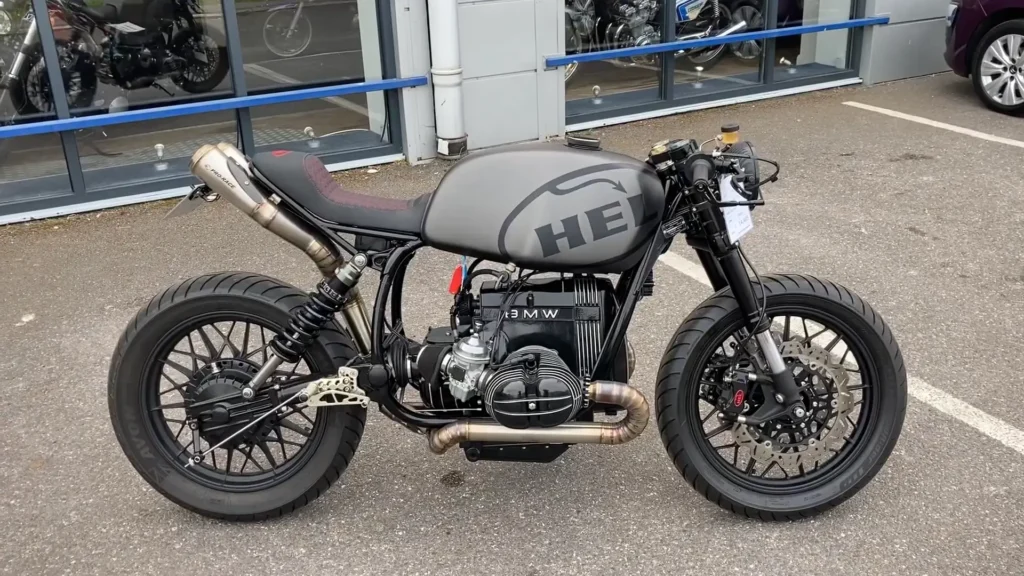
The BMW R100 may have more power, but the BMW R80 excels in handling. With a smaller 800cc engine and lighter weight, the R80 offers a smoother, more balanced ride. It’s not as fast as the R100, producing about 50-55 horsepower, but what it lacks in speed, it makes up for in control.
For city riders or those on twisty roads, the R80’s agility is a big advantage. Its lighter frame and lower power make it easier to handle around corners and tight spaces. Many café racer fans value handling over speed, and if that’s your focus, the R80 is a great choice. Its precision allows you to take sharper turns with confidence, which can be harder on the heavier R100.
Top Speed and Torque
The BMW R100, with its bigger engine, reaches a top speed of about 120-130 mph, depending on the model and modifications. The R80, on the other hand, tops out at around 105-110 mph, which is still impressive but slower.
Torque is another area where the R100 stands out. Its higher torque makes it quicker off the line and gives it more pull in higher gears. This makes the R100 more exciting on highways or open roads. If you want a bike that can hit higher RPMs and hold steady power for long rides, the R100 is a better choice.
The R80, however, has smoother and more controlled torque. This is great for riders who prefer precision and comfort over raw power.
Daily Riding Comfort
For daily comfort, it’s important to know what kind of performance you want. The R100 is fast and powerful but can feel heavy in the city or during slower rides. Its larger frame and higher engine output can cause more vibration at lower speeds.
The R80, however, offers a more comfortable ride for everyday use. It’s lighter, easier to handle in traffic, and its engine runs smoother at low speeds. For many riders, especially those using their bike for city riding or short commutes, the R80’s manageable performance makes it a better choice for a daily café racer.
Braking and Suspension
Both the BMW R100 and R80 have similar braking systems, but the R100 usually has stronger dual-disc front brakes compared to the single-disc setup on the R80. Upgrading the braking system is a common modification for café racers, especially for the heavier and more powerful R100. If you plan to ride your café racer at high speeds, upgrading the brakes on the R100 is very important.
For suspension, the R80’s lighter frame and softer suspension make it more forgiving on rough roads. However, the R100’s suspension can be modified for a stiffer, more performance-focused feel, which fits the café racer style well. Both bikes offer a range of aftermarket suspension upgrades, allowing you to adjust based on your riding preferences.
BMW R100 vs R80: Customization Potential
One of the most exciting parts of turning a BMW R100 or R80 into a café racer is the endless customization options. Whether you want a sleek, minimalist design or a more aggressive, performance-focused build, both models offer a solid base for creativity. However, the ease of customization can differ between the two bikes due to their size, frame design, and aftermarket support. Let’s explore what each bike offers in terms of customization potential.
BMW R100 Customization
The BMW R100 is a favorite for riders who want to build a powerful café racer focused on speed and performance. Its 1000cc engine provides a strong base for custom modifications, letting builders boost its power even more. A common upgrade is swapping the stock exhaust system for a custom performance exhaust, which not only increases performance but also gives the bike a true café racer sound.
The R100’s larger frame also allows for more customization. Riders can add custom rear subframes, new tail sections, or even fuel tanks. Rear-set footpegs and clip-on handlebars are often installed to create the classic café racer riding position, which leans forward for a more aggressive look. With many aftermarket parts available, the R100 is often chosen for its performance potential and wide customization options.
BMW R80 Customization
The BMW R80, though smaller, is popular among café racer enthusiasts for its nimble handling and compact frame. Its lighter weight makes it easier to modify for better agility, which many builders appreciate. Customizing the R80 often focuses on streamlining the design—removing extra bulk and giving the bike a sleeker look.
Like the R100, the R80 has a wide range of aftermarket parts, including custom seats, rear subframes, and exhaust systems. However, builders often use the R80’s smaller frame to create a minimalist café racer. This usually involves removing stock parts, hiding the electrical system, and adding smaller parts like LED headlights and compact instrument clusters.
Key Customization Areas
Both the BMW R100 and R80 offer many opportunities for customization:
- Exhaust System: Custom exhaust upgrades are popular for both bikes. Builders often choose 2-into-1 systems or straight-pipe designs to improve the look and sound.
- Suspension Upgrades: Upgrading the suspension can greatly improve handling. Many riders replace the stock suspension with stiffer shocks or adjustable rear suspension for a sportier feel.
- Handlebars and Rear Sets: Clip-on handlebars and rear-set footpegs are key to achieving the classic café racer posture. These changes give the rider a forward-leaning, aggressive stance.
- Fuel Tank and Seat: One of the most eye-catching changes is upgrading the fuel tank and seat. Builders often go for slimmer, more angular fuel tanks and single-seat tail sections to enhance the café racer’s minimalist look.
Aftermarket Parts Availability
One reason the BMW R100 and R80 are popular for café racer builds is the wide range of aftermarket parts available. Over the years, builders and manufacturers have created specialized parts for both models. From engine performance kits to aesthetic upgrades, you’ll find parts for everything—from racing setups to stylish street bikes.
The R100, with its larger engine, has more performance-focused parts. You can easily find power kits, upgraded carburetors, and ignition systems that boost the R100’s power beyond its factory limits. The R80, however, is known for its simplicity and ease of customization, with many builders focusing on creating a lean, classic café racer look.
Cost and Complexity of Customization
The cost of customizing the R100 or R80 can vary depending on the build. R100 builds are usually more expensive because of the larger engine and need for stronger parts, especially if you’re aiming for a performance-focused café racer. Custom exhausts, fuel tanks, and engine upgrades add to the cost, making the R100 the pricier option.
The R80, while still open to many modifications, tends to be more affordable. It has a smaller engine and simpler design, making it easier to work on. Many builders like its lower cost, especially for minimalist café racer builds.
BMW R100 vs R80: Aesthetic and Style Differences
One of the best reasons to turn a BMW R100 or R80 into a café racer is the way these bikes transform. Both models provide a strong base for a stylish, minimalist design, but the final look can differ based on which one you choose. The appeal of a café racer isn’t just about looks—it’s about stripping the bike down to its essentials, creating a lean, aggressive stance that represents speed and style.
BMW R100
The BMW R100 has a stronger visual presence because of its larger engine and heavier frame. When customized as a café racer, the R100 gives off a clear sense of power and aggression. The bulkier engine can be a challenge, but with the right modifications, it can turn into a sleek, muscular café racer that stands out.
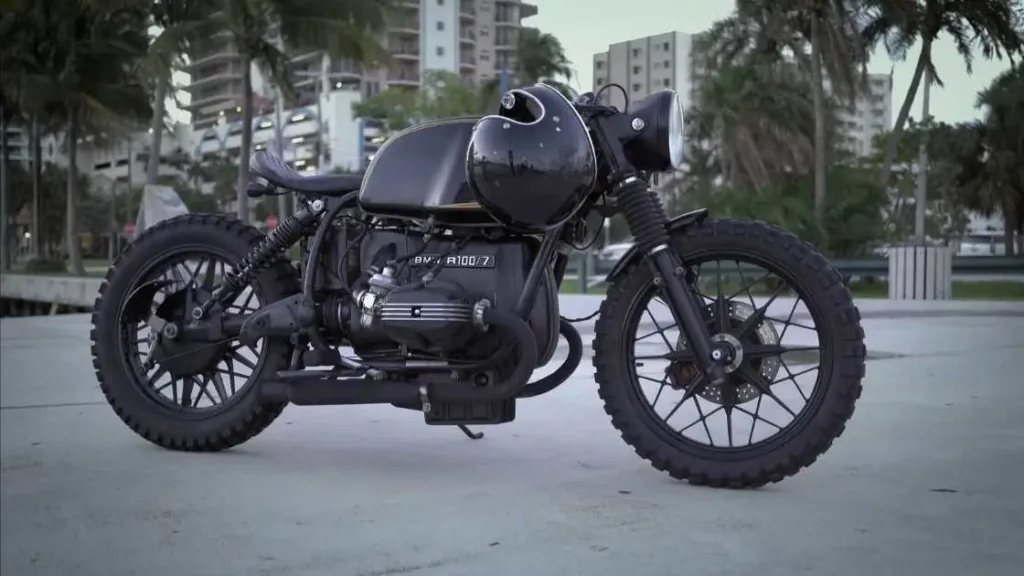
A key part of many R100 builds is keeping its power while reducing visual clutter. Builders often remove stock fenders, large fuel tanks, and bulky seats, replacing them with lighter, more angular parts. A custom subframe and streamlined tail section highlight the bike’s raw power, while rear-set footpegs and clip-on handlebars give it a race-ready look that fits the café racer style.
For colors, many R100 café racers go with bold shades like black, metallic gray, or deep red to enhance the aggressive feel. Classic touches like chrome exhausts, brushed aluminum, and vintage leather seats can balance the modern look with classic BMW heritage.
BMW R80
The BMW R80 is often the more minimalist choice for café racer builders. Its smaller engine and lighter frame give it a clean, compact look. When customized, the R80 offers a sleek, agile appearance that focuses on simplicity and elegance over raw power.
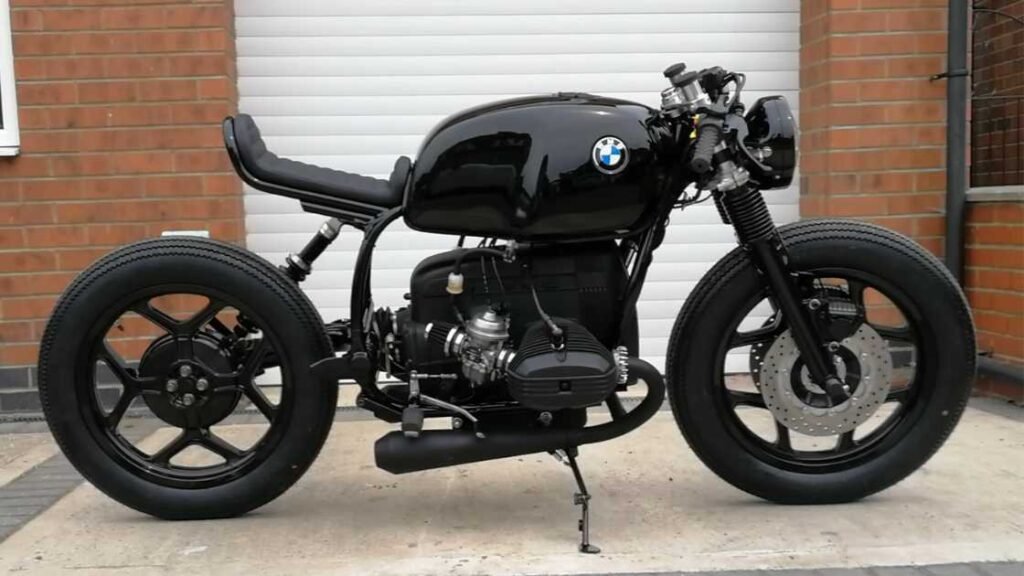
Builders often strip the R80 down to its basics, removing unnecessary parts to create a lightweight, nimble machine. The fuel tank is usually swapped for a smaller, more angular one, and the stock seat is replaced with a low-profile café racer seat. This creates a compact, streamlined design that represents the essence of the café racer style: light, fast, and built for quick city rides.
A common theme for R80 builds is to highlight its vintage charm with neutral colors like matte black, silver, or muted shades of blue and green. These colors, along with retro details like spoked wheels, round headlights, and leather accents, give the R80 an elegant yet understated look that fits perfectly in the café racer world.
Key Visual Elements of Cafe Racer Style
No matter which model you choose—the powerful BMW R100 or the nimble BMW R80—some key elements are essential for any café racer build:
- Clip-on Handlebars: These lower the rider’s position, giving the bike an aggressive, forward-leaning look that defines café racers.
- Rear-Set Footpegs: Along with clip-ons, rear-set footpegs create a racer-like posture, focused on speed and performance.
- Custom Seats and Tail Sections: A sleek, low-profile seat with a minimalist tail section completes the streamlined café racer look.
- Exposed Engine Components: Stripping away bodywork to expose the bike’s boxer engine is a signature café racer style, giving the bike a raw, mechanical feel.
Comparing the Aesthetic Approaches
Both bikes offer great potential for custom builds, but they differ in style. The BMW R100 has a bold, aggressive look, ideal for riders who want a café racer that stands out with power and presence. In contrast, the BMW R80 is perfect for those who prefer a clean, minimalist design that highlights the essence of café racers.
If you want a bike that looks fast even when it’s standing still, with a muscular, performance-driven appearance, the R100 is a great choice. But if you’re after a sleek, urban racer with a simple, elegant style, the R80 might suit you better.
Cost of Builds
A key factor when choosing between the BMW R100 and R80 for a café racer build is the cost. Both bikes have great potential for customization, but the total expense of turning them into a finished café racer can vary a lot. In this section, we’ll look at the main cost considerations for each model, including the initial price, parts availability, customization expenses, and long-term maintenance costs.
Initial Purchase Price
The first major cost to think about is the price of the bike. Since the BMW R100 has a bigger engine and is more popular, it usually costs more than the R80. Depending on the year, condition, and demand, a decent R100 in stock condition can cost between $4,000 and $10,000 USD.
The BMW R80 is usually more affordable. Because of its smaller engine and lower power, it typically sells for between $3,500 and $7,000 USD for a well-maintained model. However, the price can change depending on the version, like the R80RT (touring model) or R80/7 (standard model), and whether it’s already partly customized or still in stock condition.
Customization Costs
The biggest expense in building a café racer comes from customization and aftermarket parts. Both the R100 and R80 have a large selection of available parts to fit any budget or style. However, the BMW R100 usually costs a bit more to customize because of its larger engine and need for stronger components.
- Exhaust Systems: Custom exhausts, such as 2-into-1 systems, can cost between $300 and $1,500 USD, depending on the brand and design.
- Suspension Upgrades: Upgrading the suspension with brands like YSS or Öhlins can range from $500 to $1,200 USD. These upgrades are important for improving handling and comfort.
- Clip-on Handlebars and Rear Sets: These are affordable and typically range from $100 to $300 USD. They are key for achieving the café racer riding posture.
- Custom Seats and Subframes: Custom tail sections and seats can cost anywhere from $200 to $1,000 USD, depending on how complex the design is. Since the R100 has a bulkier frame, the components are often larger, which may raise the cost.
Parts Availability and Cost
Both bikes have been around for years, so there are plenty of aftermarket parts available. However, the BMW R100 has a wider selection of performance parts due to its popularity among builders. For example, engine kits like Siebenrock Power Kits, which boost power or reliability for the R100, can cost between $1,000 and $2,000 USD.
The R80, being smaller, generally needs less expensive parts for performance upgrades. The difference is small, especially for parts like brakes, suspension, or seats. Engine rebuild kits for the R80 may also be cheaper since it has lower performance demands compared to the R100.
Engine and Performance Upgrades
If you want to boost the performance of your BMW R100 café racer, upgrades like high-performance carburetors or ignition systems can cost a few hundred dollars. Carburetors for the R100 range from $300 to $600 USD. Adding high-flow air filters or performance exhausts will increase the cost.
Though the BMW R80 has less power, many builders still upgrade its engine. Some install bigger pistons or larger carburetors. These upgrades are usually cheaper than those for the R100 but can still cost between $500 and $1,500 USD, depending on the parts.
Labor and Skill Costs
If you’re skilled at working on bikes, you can save money by doing the work yourself. But if you need to hire a professional, labor costs can add up quickly. Most custom bike shops charge between $50 and $100 USD per hour. Building a full café racer can take 50 to 100 hours or more, depending on how complex the project is. This means labor alone could cost several thousand dollars.
For more advanced tasks like frame modifications or engine tuning, costs can rise further. This is especially true for the BMW R100, where high-performance modifications are common. The BMW R80 is usually simpler to work on, which might lower labor costs, especially if your focus is on appearance rather than performance.
Long-Term Maintenance Costs
Both the BMW R100 and R80 are known for being reliable and easy to maintain. However, the R100’s larger engine may lead to higher maintenance costs over time. Basic parts like spark plugs, oil filters, and gaskets are affordable. But because the R100 has more power, it may need service more often. Tasks like tuning carburetors, adjusting valves, and maintaining the shaft drive are common. If you can do these yourself, you’ll save money, but it’s important to budget for ongoing maintenance.
The R80 usually costs less to maintain. Its smaller engine and smoother power put less strain on its parts, so repairs are less frequent. This makes it a good choice if you plan to use your bike for regular commuting or relaxed rides.
Total Build Cost
To give you an idea of the total costs, building a BMW R100 café racer can cost between $7,000 and $15,000 USD or more. This depends on the type of modifications and the quality of parts used. On the other hand, a BMW R80 build may cost a bit less, typically between $5,000 and $12,000 USD, depending on the project.
BMW R100 vs R80: Which Model is Better for a Café Racer?
When deciding between the BMW R100 and BMW R80 for a café racer build, it depends on what you need and how you ride. Personally, I prefer the BMW R80. It’s lighter, easier to handle, and perfect for city riding or curvy roads. The 800cc engine doesn’t have the raw power of the R100, but it’s smooth and comfortable for daily use. If you love the classic café racer style, the R80’s sleek, simple design fits well. Plus, it’s often cheaper to buy and modify, which is great if you’re on a budget.
However, if you want more power and speed, the BMW R100 might be a better fit. With its 1000cc engine, the R100 focuses on performance. It’s ideal for long rides or when you want to go fast on the highway. It’s heavier and can feel bulkier in the city, but if you love horsepower, the R100 is hard to beat. There are also plenty of options to customize it and make it faster and stronger.
For me, I’d still choose the R80. It’s nimble, stylish, and more practical for daily riding, especially in town. But if you’re focused on power and performance, the R100 is a beast worth considering.
So, the choice depends on what you want. Go for the BMW R100 if speed and power are your main goals. But if you want something agile, easy to handle, and budget-friendly, the BMW R80 is a fantastic option.
Conclusion
Both the BMW R100 and BMW R80 are great choices for building a café racer. The R100 offers power and speed, while the R80 provides agility and precision. Your choice depends on how you want your café racer to look and feel. If you want a fast, strong bike, the R100 is ideal. If you prefer a sleek, nimble ride for city streets, the R80 is perfect.
No matter which one you choose, both the BMW R100 and R80 can be turned into stylish, high-performance café racers that will stand out wherever you ride.
Disclaimer
This article is based on research and general knowledge about the BMW R100 and R80 motorcycles. While we aim to provide accurate and up-to-date information, motorcycle performance, customization, and prices can vary depending on the condition of the bike, the parts used, and market changes.
This article is for informational purposes only and should not replace professional or mechanical advice. If you plan to buy, modify, or build a café racer, we suggest consulting with a professional mechanic or builder. They can provide personalized advice and ensure that all modifications are safe and follow local rules.
FAQs
Which bike is easier to customize: the BMW R100 or the BMW R80?
Both bikes are highly customizable. However, the BMW R80 is easier to modify because it has a lighter frame and a simpler design. It’s perfect for minimalist café racer builds. The R100, on the other hand, may need more complex modifications, especially due to its bigger engine and heavier frame.
Is the BMW R100 worth the extra cost compared to the R80 for a café racer build?
It depends on what you want from your café racer. If you’re after power, speed, and performance, the R100 is worth the higher price. But if you want agility, easy handling, and a lighter bike, the R80 is a more affordable option without losing the café racer style.
Can the BMW R80 match the R100 in performance?
The R80 is more agile and has smoother handling, but it can’t match the raw power of the R100. The R80 is ideal for city rides and twisty roads but lacks the top speed and acceleration of the R100. For longer rides and highways, the R100 outperforms the R80.
Are there any drawbacks to choosing the BMW R100 for a café racer build?
The R100 is heavier, which makes it less nimble in city traffic or tight corners. Its larger engine can also make customization and maintenance more expensive. The bike’s weight can make it harder to achieve the sleek look many café racers aim for.
What are the main benefits of choosing the BMW R80 for a café racer?
The R80 is lighter, easier to handle, and less expensive to customize. It’s a great option if you value agility and a clean, minimalist design. The R80 is perfect for city rides and is also more cost-effective in terms of maintenance compared to the R100.
Can I upgrade a BMW R80 to match the performance of the BMW R100?
While you can upgrade the R80’s performance with parts like larger carburetors or a performance exhaust, it won’t match the power of the R100. However, these upgrades can make the R80 faster and more responsive, making it a solid performer in most situations.
Is it possible to achieve a lightweight café racer look with the BMW R100?
Yes, but it takes more effort. You can remove heavy parts like the stock fuel tank, fenders, and seat, and replace them with lighter custom parts. While the R100 is heavier by nature, you can still create a sleek café racer look, though the R80 makes this easier.
Which bike is better for daily use: the BMW R100 or the BMW R80?
For daily use or commuting, the BMW R80 is usually a better choice because it’s lighter, easier to handle, and cheaper to maintain. The R100, while powerful, might be overkill for daily riding and can be harder to handle in busy areas. But if you need extra power for highway or long-distance trips, the R100 would be a better option.

